The Aerodynamic Effect of an Alula-like Vortex Generator on a Revolving Wing
Abstract
:1. Introduction
2. Experimental Setup
2.1. Test Model Design
2.2. Particle Image Velocimetry (PIV) System
3. Results and Discussion
3.1. The Base Case (without Alula-VG)
3.2. Flow Field of the Case with an Alula-VG
3.3. The Resultant Sectional Lift Coefficient
4. Conclusions
Author Contributions
Funding
Institutional Review Board Statement
Informed Consent Statement
Data Availability Statement
Acknowledgments
Conflicts of Interest
References
- Chen, D.; Kolomenskiy, D.; Nakata, T.; Liu, H. Forewings match the formation of leading-edge vortices and dominate aerodynamic force production in revolving insect wings. Bioinspiration Biomim. 2017, 13, 016009. [Google Scholar] [CrossRef] [PubMed]
- Jardin, T.; Colonius, T. On the lift-optimal aspect ratio of a revolving wing at low Reynolds number. J. R. Soc. Interface 2018, 15, 20170933. [Google Scholar] [CrossRef] [PubMed]
- Warrick, D.R.; Tobalske, B.W.; Powers, D.R. Lift production in the hovering hummingbird. Proc. R. Soc. B Biol. Sci. 2009, 276, 3747–3752. [Google Scholar] [CrossRef] [PubMed]
- Deng, S.; Percin, M.; van Oudheusden, B. Experimental investigation of aerodynamics of flapping-wing micro-air-vehicle by force and flow-field measurements. AIAA J. 2016, 54, 588–602. [Google Scholar] [CrossRef]
- Tay, W.-B.; Jadhav, S.; Wang, J.-L. Application and improvements of the wing deformation capture with simulation for flapping micro aerial vehicle. J. Bionic Eng. 2020, 17, 1096–1108. [Google Scholar] [CrossRef]
- Wang, H.; Li, Y.; Pröbsting, S.; Zheng, X.; Hu, Q.; Chen, D.; Liu, H.; Wu, X. Aerodynamics of the Wells turbine with a Hawkmoth-inspired blade design. Bioinspiration Biomim. 2020, 15, 066001. [Google Scholar] [CrossRef]
- Bhat, S.S.; Zhao, J.; Sheridan, J.; Hourigan, K.; Thompson, M.C. Uncoupling the effects of aspect ratio, Reynolds number and Rossby number on a rotating insect-wing planform. J. Fluid Mech. 2019, 859, 921–948. [Google Scholar] [CrossRef]
- Birch, J.M.; Dickson, W.B.; Dickinson, M.H. Force production and flow structure of the leading edge vortex on flapping wings at high and low Reynolds numbers. J. Exp. Biol. 2004, 207, 1063–1072. [Google Scholar] [CrossRef]
- Lentink, D.; Dickinson, M.H. Rotational accelerations stabilize leading edge vortices on revolving fly wings. J. Exp. Biol. 2009, 212, 2705–2719. [Google Scholar] [CrossRef]
- Lee, Y.; Lua, K.-B.; Lim, T. Aspect ratio effects on revolving wings with Rossby number consideration. Bioinspiration Biomim. 2016, 11, 056013. [Google Scholar] [CrossRef]
- Manar, F.; Mancini, P.; Mayo, D.; Jones, A.R. Comparison of rotating and translating wings: Force production and vortex characteristics. AIAA J. 2016, 54, 519–530. [Google Scholar] [CrossRef]
- Lee, S.-I.; Kim, J.; Park, H.; Jabłoński, P.G.; Choi, H. The function of the alula in avian flight. Sci. Rep. 2015, 5, 9914. [Google Scholar] [CrossRef] [PubMed]
- Linehan, T.; Mohseni, K. Scaling trends of bird’s alular feathers in connection to leading-edge vortex flow over hand-wing. Sci. Rep. 2020, 10, 7905. [Google Scholar] [CrossRef] [PubMed]
- Lee, S.-I.; Choi, H. Characteristics of the alula in relation to wing and body size in the Laridae and Sternidae. Anim. Cells Syst. 2017, 21, 63–69. [Google Scholar] [CrossRef]
- Linehan, T.; Mohseni, K. On the maintenance of an attached leading-edge vortex via model bird alula. J. Fluid Mech. 2020, 897. [Google Scholar] [CrossRef]
- Li, X.-k.; Liu, W.; Zhang, T.-j.; Wang, P.-m.; Wang, X.-d. Analysis of the effect of vortex generator spacing on boundary layer flow separation control. Appl. Sci. 2019, 9, 5495. [Google Scholar] [CrossRef]
- Seshagiri, A.; Cooper, E.; Traub, L.W. Effects of vortex generators on an airfoil at low Reynolds numbers. J. Aircr. 2009, 46, 116–122. [Google Scholar] [CrossRef]
- Lin, J.C. Review of research on low-profile vortex generators to control boundary-layer separation. Prog. Aerosp. Sci. 2002, 38, 389–420. [Google Scholar] [CrossRef]
- Chung, K.-M.; Su, K.-C.; Chang, K.-C. The effect of vortex generators on shock-induced boundary layer separation in a transonic convex-corner flow. Aerospace 2021, 8, 157. [Google Scholar] [CrossRef]
- Beals, N.; Jones, A.R. Lift production by a passively flexible rotating wing. AIAA J. 2015, 53, 2995–3005. [Google Scholar] [CrossRef]
- Kruyt, J.W.; Van Heijst, G.F.; Altshuler, D.L.; Lentink, D. Power reduction and the radial limit of stall delay in revolving wings of different aspect ratio. J. R. Soc. Interface 2015, 12, 20150051. [Google Scholar] [CrossRef] [PubMed]
- Wang, S.; Ghaemi, S. Effect of vane sweep angle on vortex generator wake. Exp. Fluids 2019, 60, 24. [Google Scholar] [CrossRef]
- Manar, F.; Medina, A.; Jones, A.R. Tip vortex structure and aerodynamic loading on rotating wings in confined spaces. Exp. Fluids 2014, 55, 1815. [Google Scholar] [CrossRef]
- Eldredge, J.; Wang, C.; Ol, M. A computational study of a canonical pitch-up, pitch-down wing maneuver. In Proceedings of the 39th AIAA Fluid Dynamics Conference, San Antonio, TX, USA, 22–25 June 2009. [Google Scholar]
- Chen, W.-H.; Yeh, S.-I. Aerodynamic effects on an emulated hovering passerine with different wing-folding amplitudes. Bioinspiration Biomim. 2021, 16, 046011. [Google Scholar] [CrossRef] [PubMed]
- Thielicke, W.; Stamhuis, E. PIVlab–towards user-friendly, affordable and accurate digital particle image velocimetry in MATLAB. J. Open Res. Softw. 2014, 2, e30. [Google Scholar] [CrossRef]
- Jeong, J.; Hussain, F. On the identification of a vortex. J. Fluid Mech. 1995, 285, 69–94. [Google Scholar] [CrossRef]
- Jones, A.R.; Medina, A.; Spooner, H.; Mulleners, K. Characterizing a burst leading-edge vortex on a rotating flat plate wing. Exp. Fluids 2016, 57, 52. [Google Scholar] [CrossRef]
- Jardin, T.; David, L. Spanwise gradients in flow speed help stabilize leading-edge vortices on revolving wings. Phys. Rev. E 2014, 90, 013011. [Google Scholar] [CrossRef]
- Aono, H.; Liu, H. Flapping wing aerodynamics of a numerical biological flyer model in hovering flight. Comput. Fluids 2013, 85, 85–92. [Google Scholar] [CrossRef] [Green Version]
- Lambourne, N.C.; Bryer, D.W. The bursting of leading-edge vortices-some observations and discussion of the phenomenon, ARC R&M; H.M. Stationery Office: Richmond, UK, 1961.
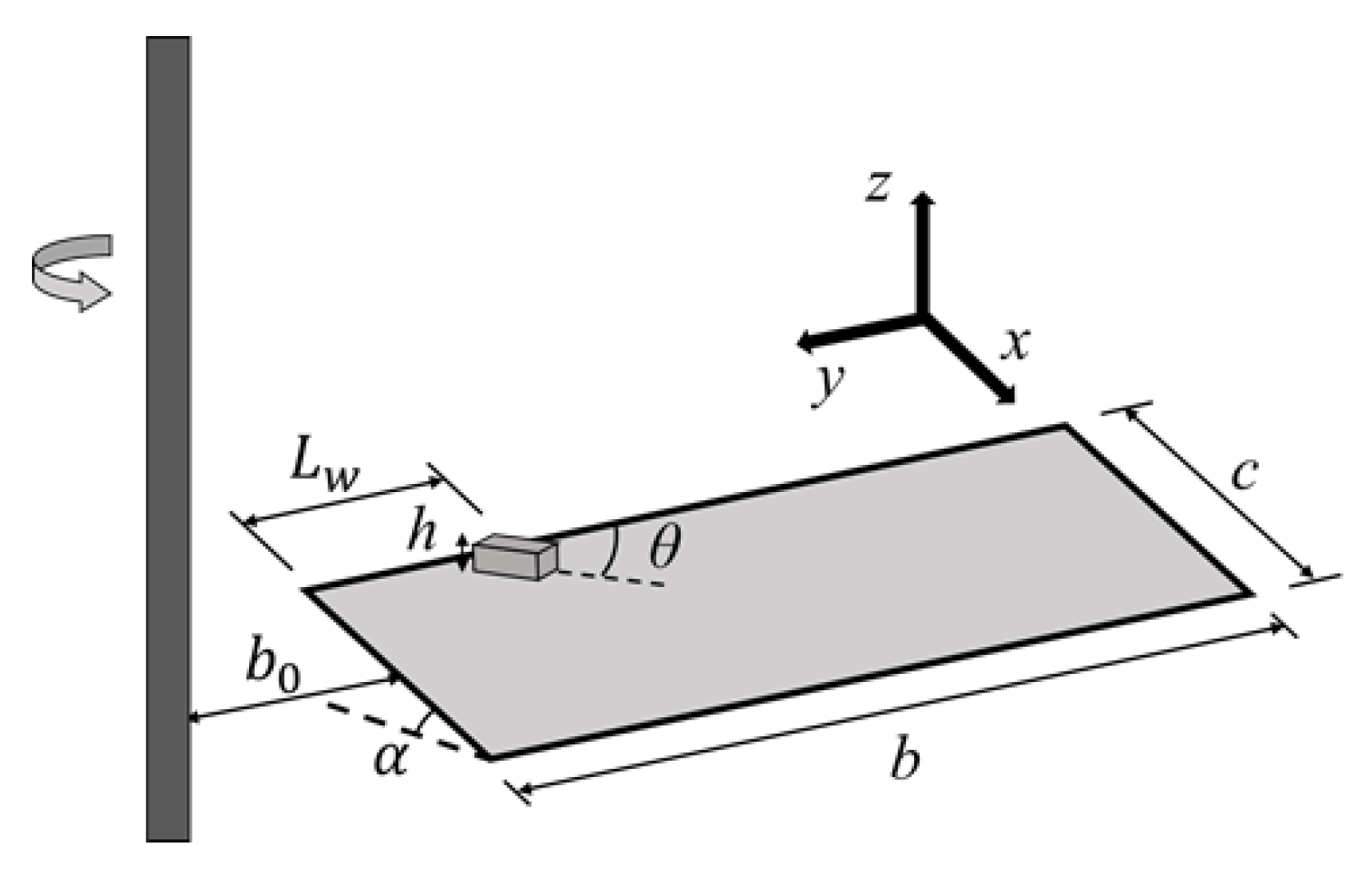
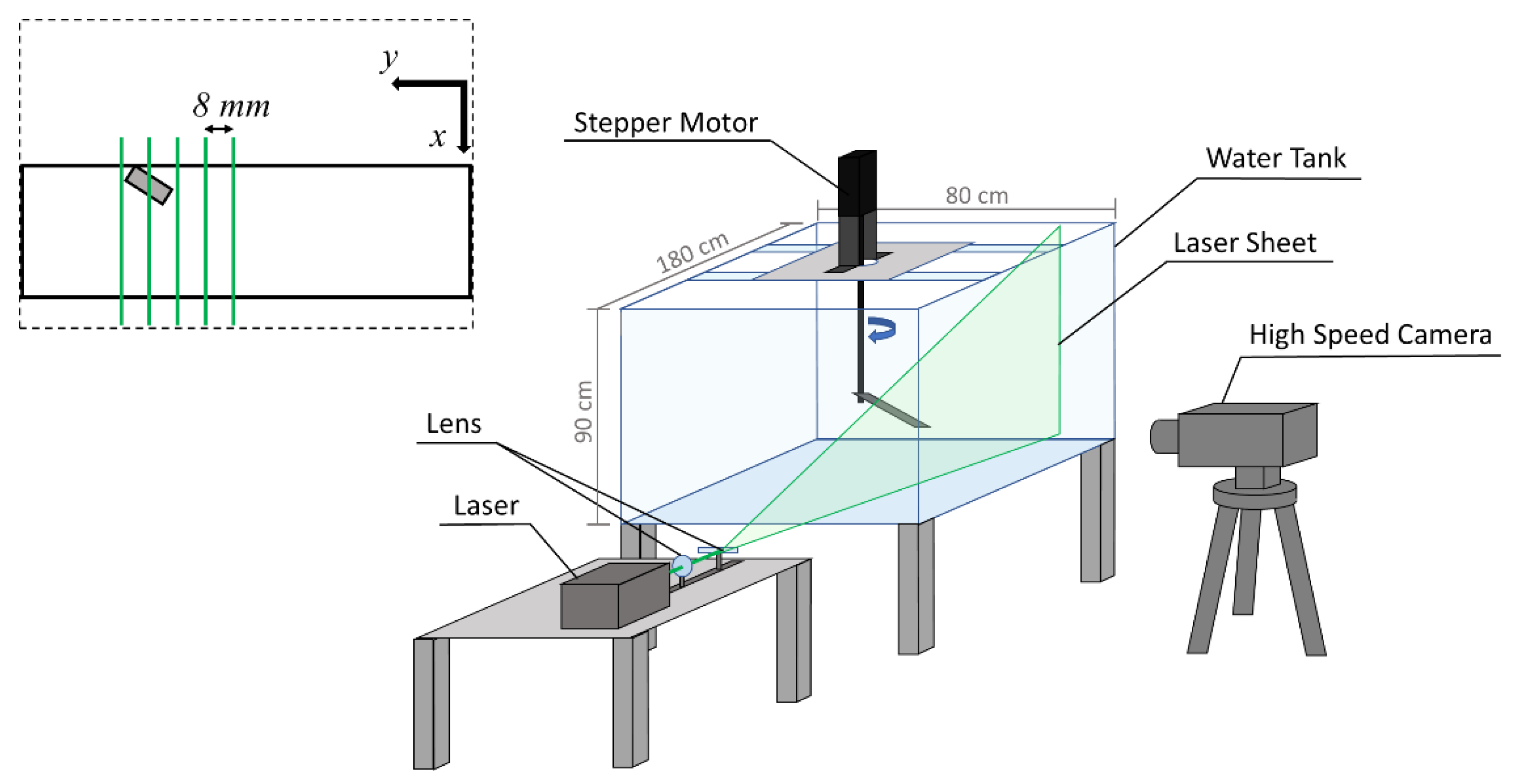
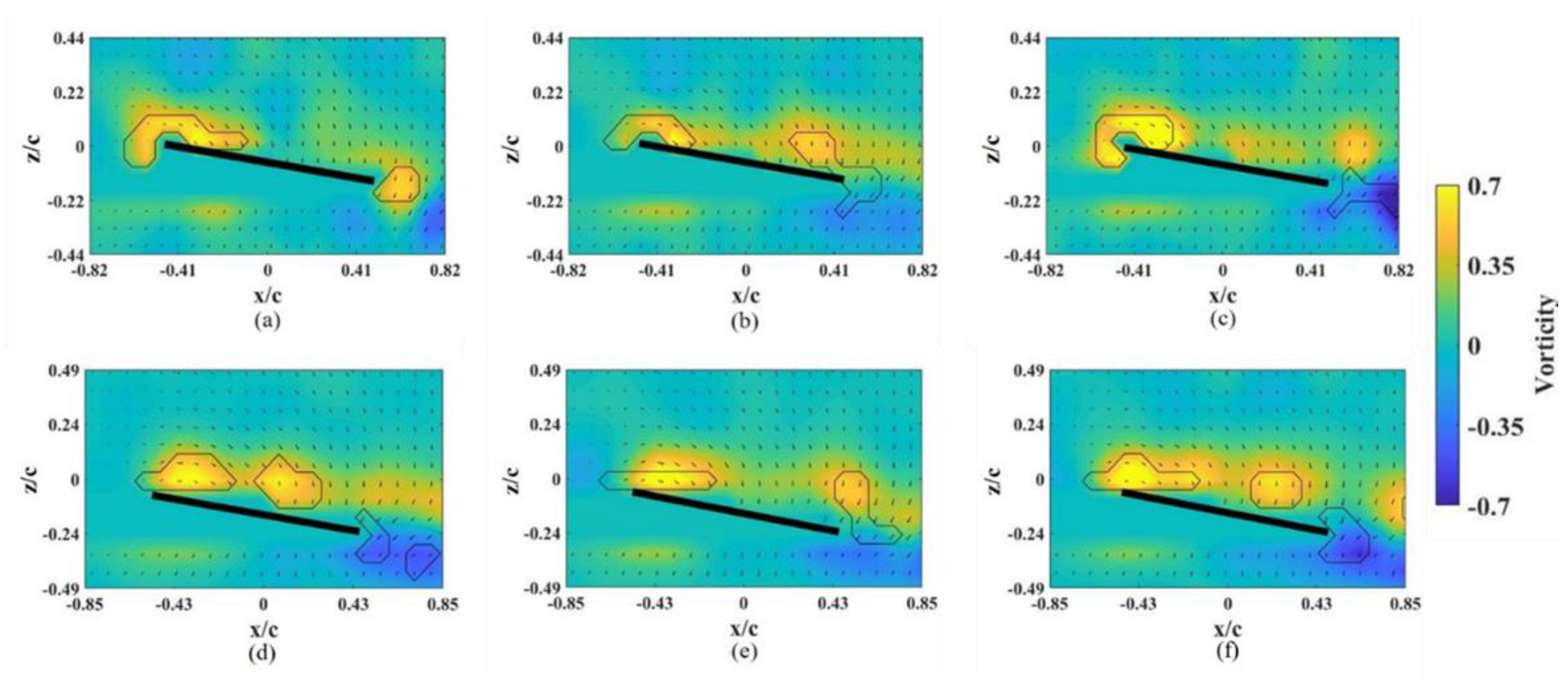

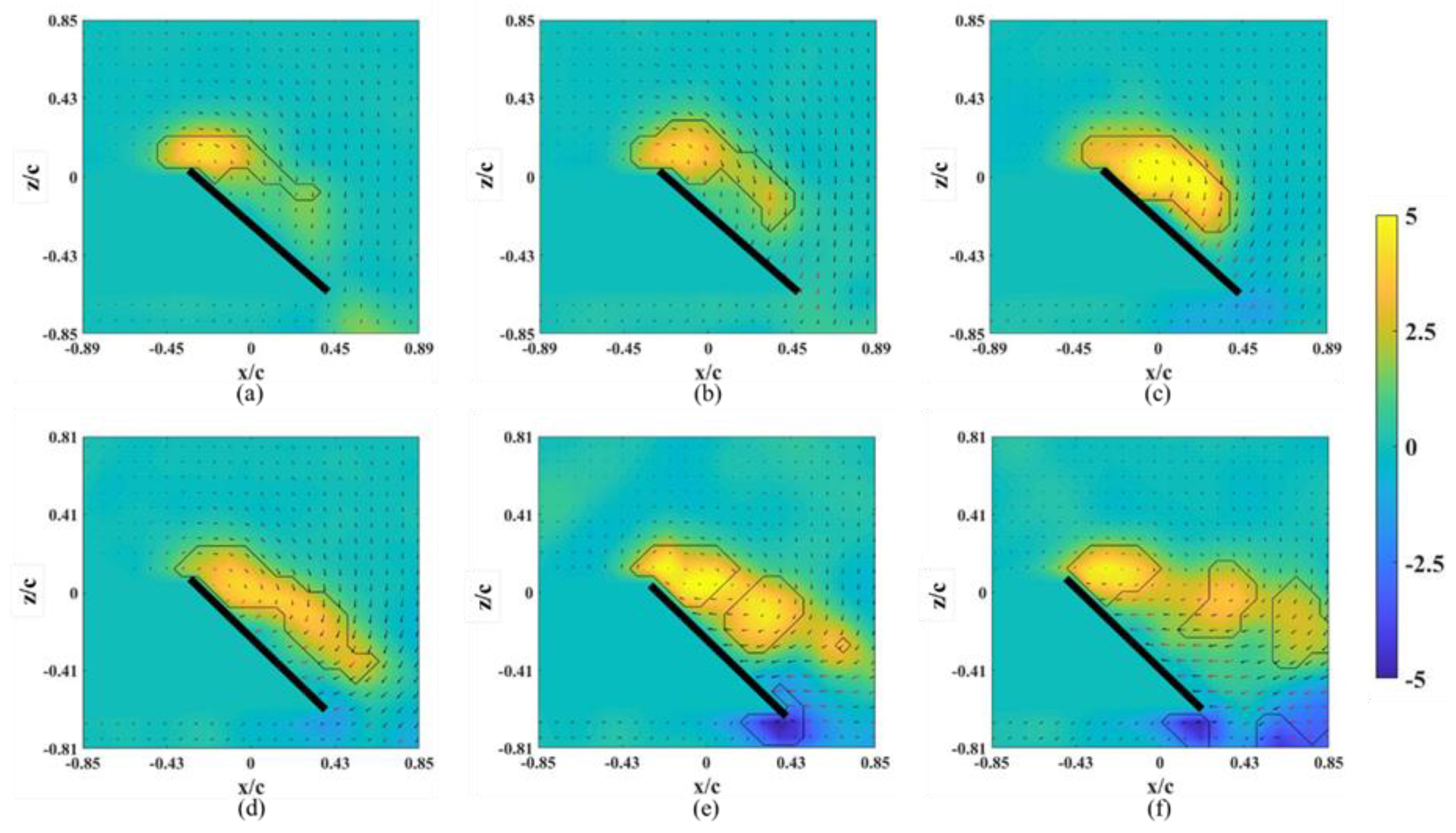
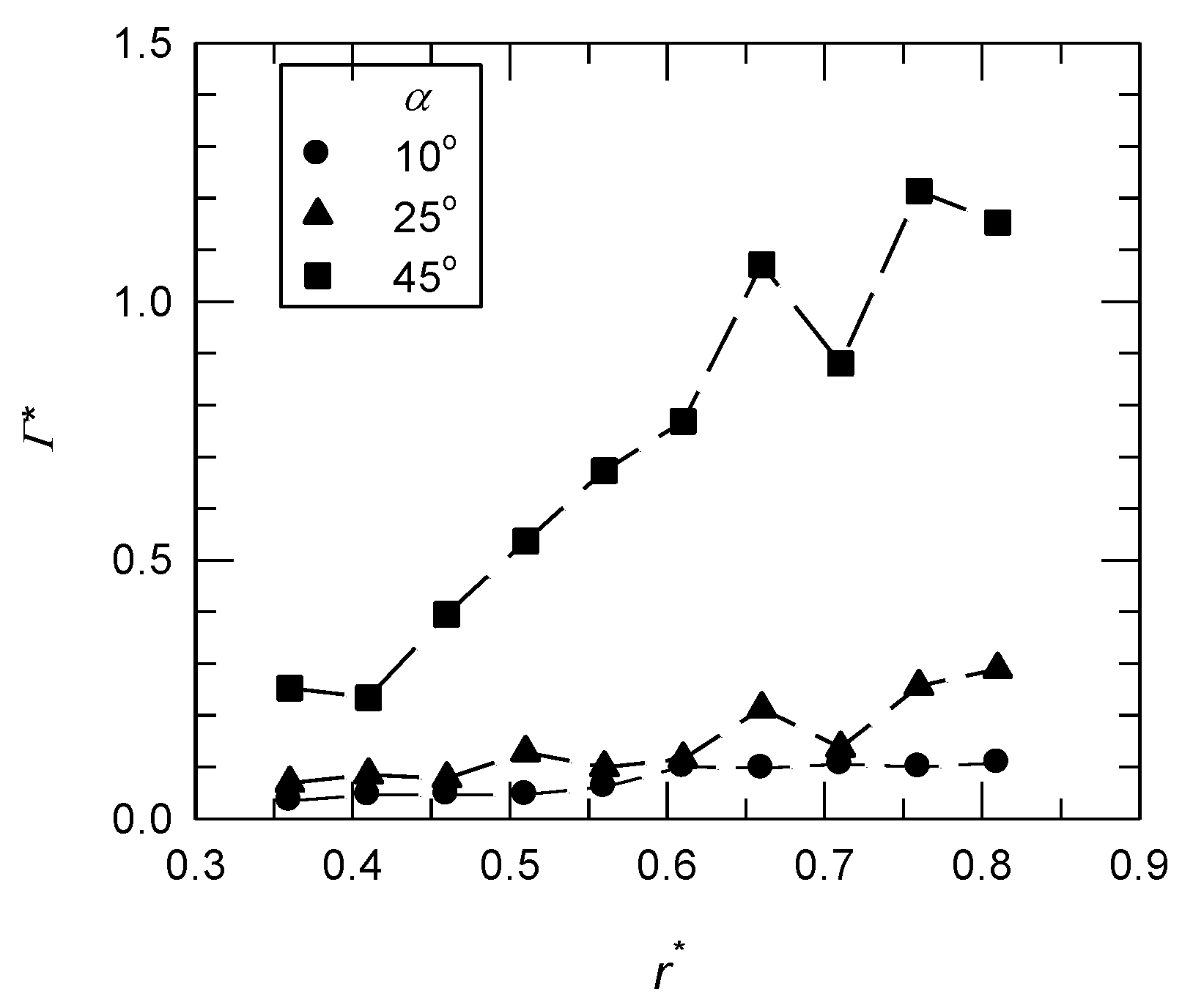
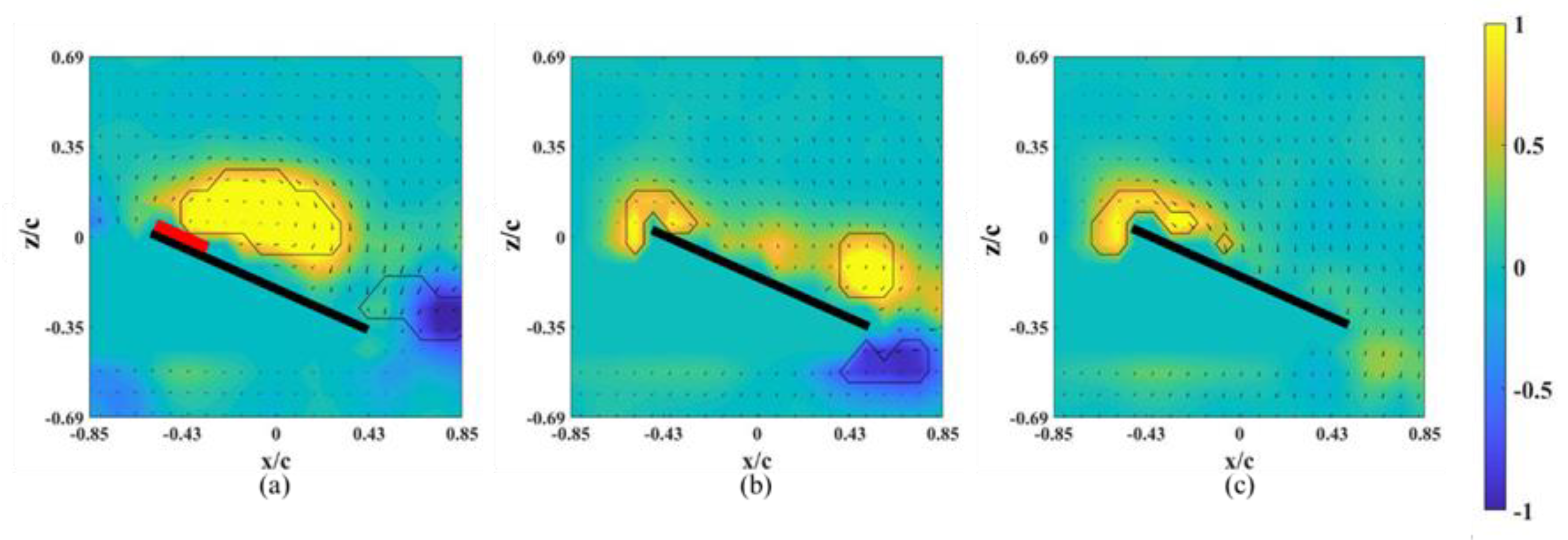
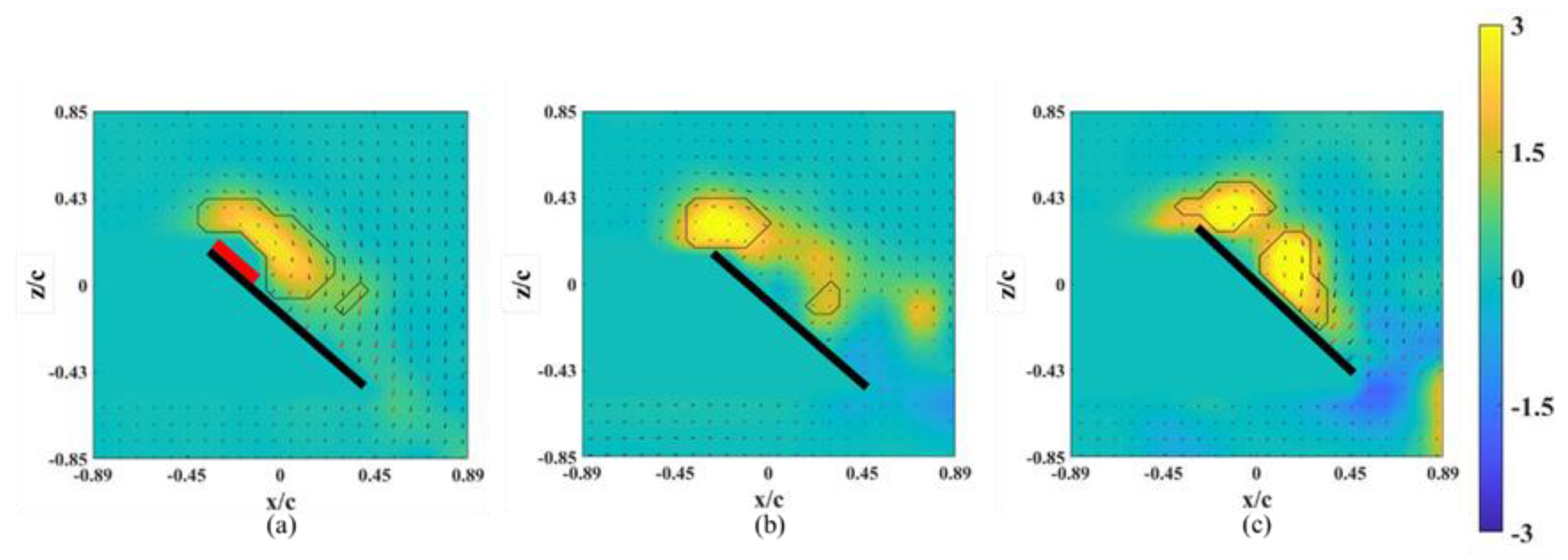
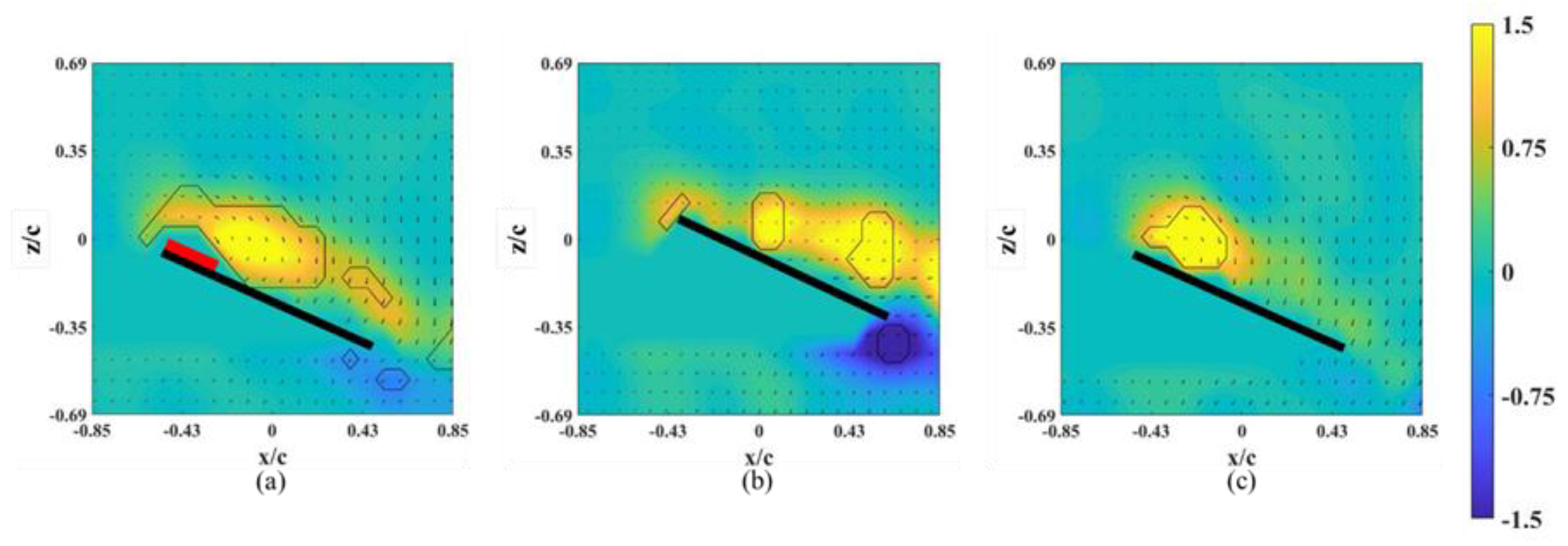

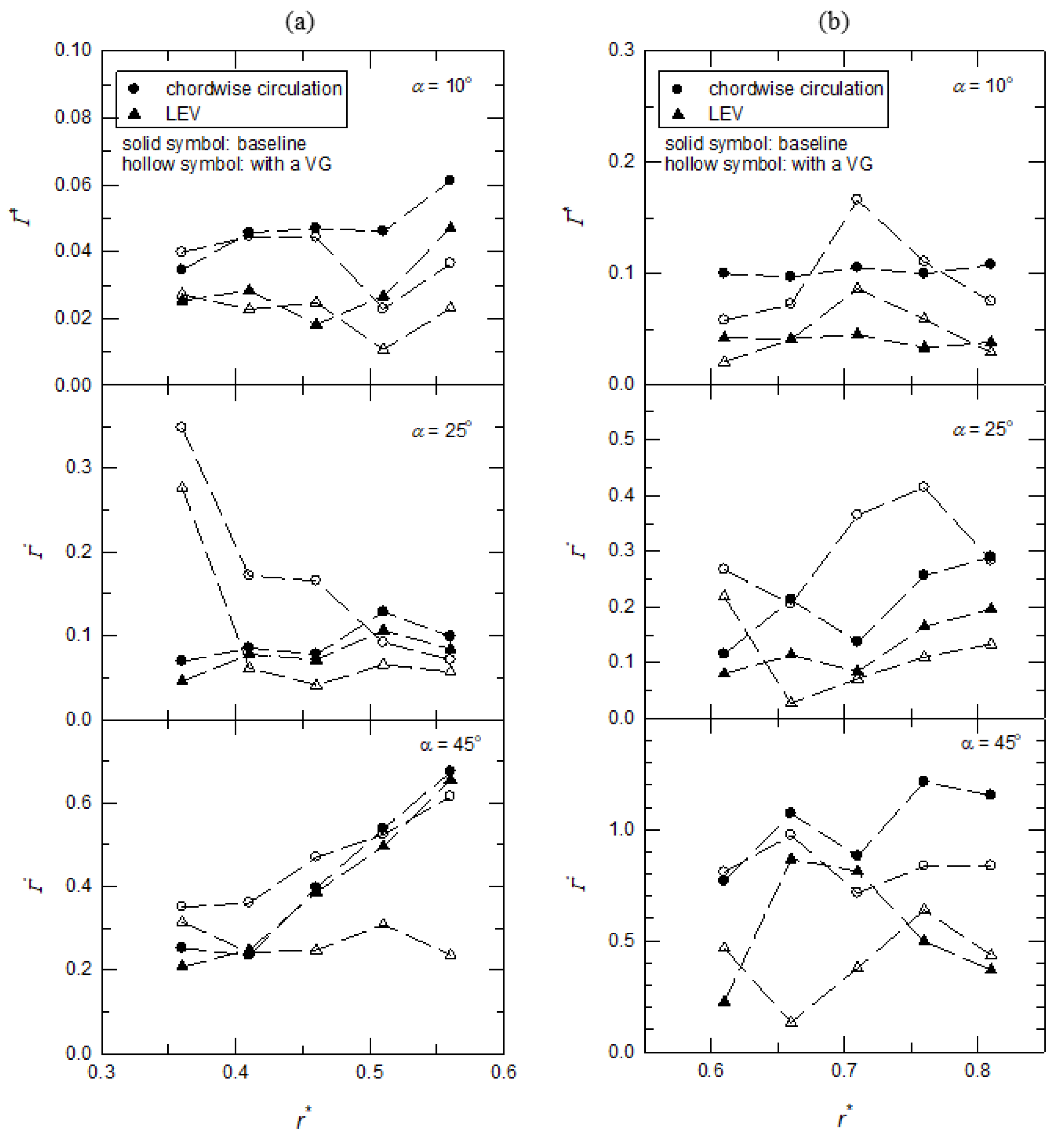
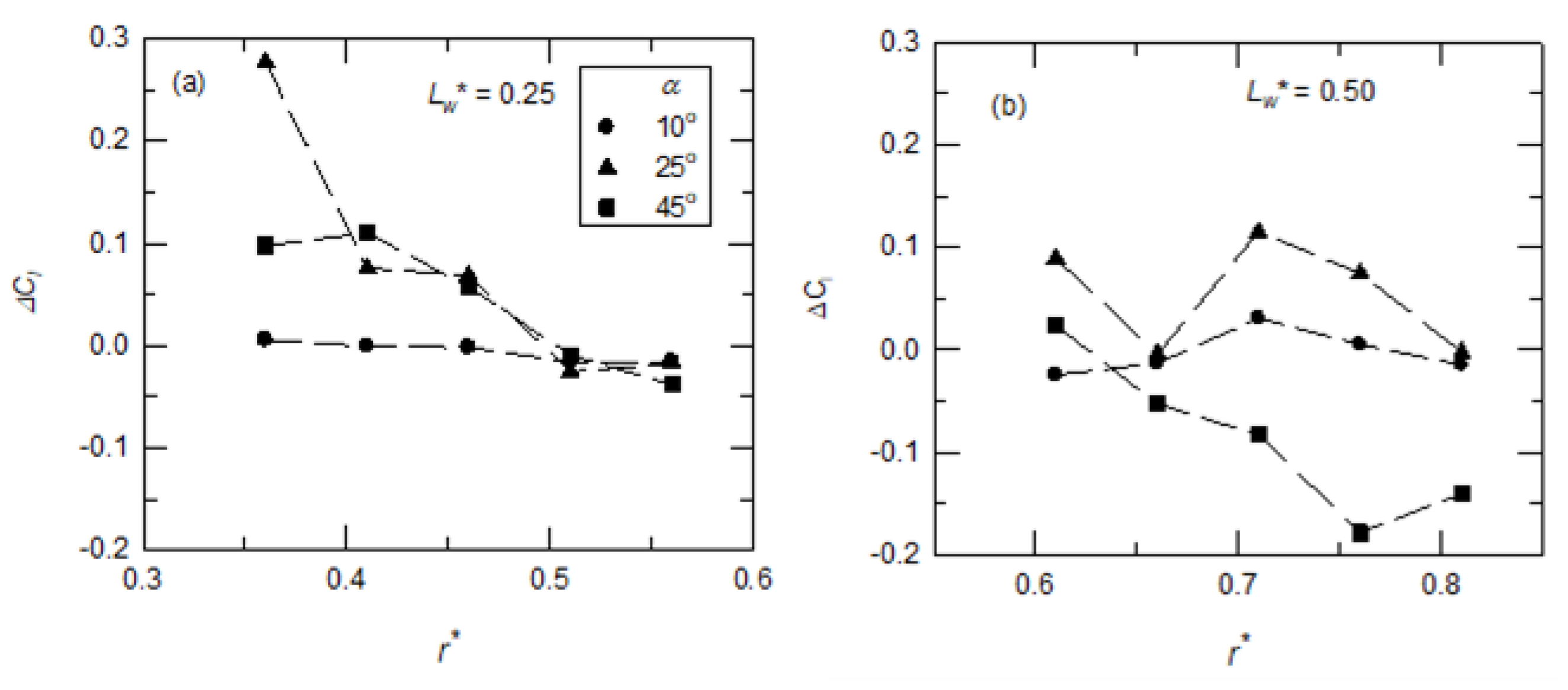
Publisher’s Note: MDPI stays neutral with regard to jurisdictional claims in published maps and institutional affiliations. |
© 2022 by the authors. Licensee MDPI, Basel, Switzerland. This article is an open access article distributed under the terms and conditions of the Creative Commons Attribution (CC BY) license (https://creativecommons.org/licenses/by/4.0/).
Share and Cite
Chung, P.-H.; Chang, P.-H.; Yeh, S.-I. The Aerodynamic Effect of an Alula-like Vortex Generator on a Revolving Wing. Biomimetics 2022, 7, 128. https://doi.org/10.3390/biomimetics7030128
Chung P-H, Chang P-H, Yeh S-I. The Aerodynamic Effect of an Alula-like Vortex Generator on a Revolving Wing. Biomimetics. 2022; 7(3):128. https://doi.org/10.3390/biomimetics7030128
Chicago/Turabian StyleChung, Ping-Han, Po-Hsiang Chang, and Szu-I Yeh. 2022. "The Aerodynamic Effect of an Alula-like Vortex Generator on a Revolving Wing" Biomimetics 7, no. 3: 128. https://doi.org/10.3390/biomimetics7030128
APA StyleChung, P.-H., Chang, P.-H., & Yeh, S.-I. (2022). The Aerodynamic Effect of an Alula-like Vortex Generator on a Revolving Wing. Biomimetics, 7(3), 128. https://doi.org/10.3390/biomimetics7030128




